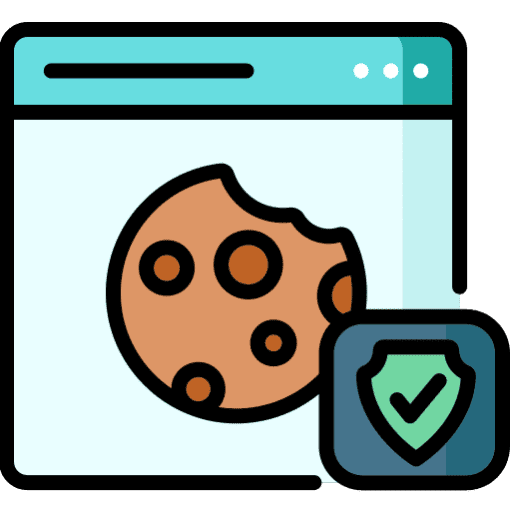As parents, we all want the best for our children. We want to see them grow up to be happy, successful and fulfilled in life. One of the most crucial aspects of ensuring their future success is by providing them with a good education. Education opens doors, creates opportunities and empowers individuals to achieve their dreams.
But let's face it; education is expensive. The cost of tuition fees, books, accommodation, and other expenses can add up quickly. Without proper planning and financial management, many families find themselves struggling to afford the education that their child deserves.
This is where saving money for your child's education becomes critical. By starting early and investing wisely, you can secure your child's future without worrying about the financial burden that comes with it.
The benefits of saving money for your child's education are numerous. For starters, it ensures that your child has access to quality education without being held back by financial constraints. It also gives your child more opportunities for higher learning and career advancement.
Moreover, saving money for your child's education also instills a sense of responsibility in both parents and children alike. It teaches children the value of hard work and dedication while showing parents how to prioritize their finances effectively.
But perhaps the most significant benefit of saving money for your child's education is peace of mind. Knowing that you have taken care of your child's future allows you to focus on other aspects of their upbringing without worrying about how you will pay for their college or university fees.
As a father of 3, I understand the emotional significance behind providing an excellent education for our children. It represents hope – hope for a better future filled with endless possibilities and opportunities.
So don't wait any longer; start saving now! Every dollar counts when it comes to securing your child's future. You owe it to yourself and your children to take action towards building a brighter tomorrow.
Saving money for a child's education is not without its challenges. For many parents, the cost of tuition fees, books, accommodation and other expenses can be overwhelming. Here are some of the challenges that parents face when saving money for their child's education:
- Limited Financial Resources: Many families struggle to make ends meet on a daily basis, leaving little room for savings towards future education costs.
- Inflation: The cost of college and university education has increased significantly over the years, making it harder for parents to save enough money to cover these costs.
- Uncertainty: The future is unpredictable, and it can be challenging to plan finances around something that is still years away. Parents may worry about unforeseen circumstances such as job loss or unexpected medical bills that could impact their ability to save.
- Lack of Knowledge: Some parents may not be aware of the various options available for saving money for their child's education or how to invest their savings wisely.
- Balancing Priorities: Saving for a child's education requires sacrifices in other areas of life such as vacations or home upgrades, which can be difficult to balance with other financial obligations.
Despite these challenges, it's essential for parents to prioritize saving money for their child's education. With careful planning and smart investment strategies, it is possible to overcome these obstacles and secure a bright future for your child without sacrificing other important aspects of life along the way.
Start Early and Set Goals
When you start saving for your child's education early on, you give yourself ample time to build up a substantial amount of money that can go towards tuition fees, books, accommodation and other expenses. By taking this step forward towards securing their future, you are giving them an invaluable gift – the gift of freedom.
Starting early also means that you can take advantage of compound interest. The earlier you start investing in a savings plan or educational fund, the more time it has to grow over time. This means that even small amounts invested regularly can add up significantly over time.
Moreover, starting early provides peace of mind knowing that your child's future is secure. It allows you to focus on other aspects of their upbringing without worrying about how you will pay for their college or university fees.
By prioritizing saving money for your child's education early on in their life, you are setting them up for success from an early age. You are showing them that they are worth investing in and teaching them valuable lessons about financial planning and responsibility.
In addition to these benefits, starting early also enables parents to spread out the cost over a longer period while avoiding unnecessary debt accumulation or loans with high-interest rates.
Setting achievable financial goals is an essential part of planning for your future. It helps you stay on track, keep motivated and achieve financial success. Here are some tips to help you set achievable goals that align with your financial situation:
- Assess Your Current Financial Situation: To set achievable goals, you first need to understand where you stand financially. This means taking stock of your income, expenses, debts, savings and investments. Knowing your current financial situation will help you set realistic goals that are attainable.
- Define Your Priorities: Decide what's most important to you in terms of your finances. Do you want to pay off debt, save for a down payment on a house or invest for retirement? Once you know what's most important to you, it will be easier to prioritize your goals accordingly.
- Spezifische Ziele setzen: Make sure your goals are specific and measurable. For example, instead of saying “I want to save more money,” say “I want to save $500 per month.” Having specific goals makes it easier to track progress and adjust the course if necessary.
- Break Down Goals into Smaller Steps: Big goals can feel overwhelming at times, but breaking them down into smaller steps can make them more manageable and less intimidating. For example, if your goal is to save $10,000 in college funds this year, break it down into monthly payments of $833.
- Be Realistic: Setting unrealistic goals can lead to frustration and disappointment when they're not achieved. Be honest with yourself about what's possible given your current financial situation.
- Revisit and Adjust Goals as Needed: Your financial situation may change over time due to unforeseen circumstances such as job loss or medical bills. Revisit and adjust your goals as needed so that they continue to align with your current financial situation.
By following these tips, you'll be able to set achievable financial goals that align with your current financial situation while also ensuring that you're working towards a brighter future for yourself and your family.
Explore Your Options
Investing in your child's education is a crucial step towards securing their future success. As a parent, you have several options to save money for your child's education. In this section, we will explore the various options available to help you make an informed decision that aligns with your financial goals and circumstances. From 529 plans to Coverdell ESA, custodial accounts and more, we'll cover everything you need to know about saving for your child's education. Let's dive in!
- 529 Plans: A 529 plan is a tax-advantaged savings plan specifically designed for education expenses. These plans are sponsored by states, state agencies or educational institutions and allow parents to invest money on behalf of their child's future education expenses. The earnings from a 529 plan grow tax-free and withdrawals are tax-free as well when used for qualified education expenses.
- Coverdell Education Savings Account (ESA): A Coverdell ESA is another type of tax-advantaged savings account created to help parents save for their child's education expenses. Parents can contribute up to $2,000 annually per beneficiary until they reach age 18, and the funds can be used towards qualified education expenses such as tuition fees, books and supplies.
- Custodial Accounts: Custodial accounts such as Uniform Gift to Minors Act (UGMA) or Uniform Transfer to Minors Act (UTMA) accounts allow parents or guardians to hold assets on behalf of their children until they reach adulthood. The assets in these accounts can be invested in stocks, bonds or mutual funds, and can be used for any purpose including educational expenses.
- Roth IRA: While not specifically designed for educational purposes, Roth IRAs offer tax-free growth and withdrawals after age 59½ which makes them an attractive option for some families as a way to save for both retirement and college costs.
- Prepaid Tuition Plans: Prepaid tuition plans allow parents to purchase credits or units at current prices that can be used towards future tuition fees at eligible colleges or universities within the state where the plan was purchased.
It's essential to do your research before choosing which option is right for your family since each has its advantages and disadvantages depending on your financial situation and goals.
Remember that starting early is key when it comes to saving for your child's education so don't wait any longer; start today!
Now that you have a brief overview of the options, let's take a closer look at each one individually.
529 Plans
A 529 plan is a tax-advantaged savings plan specifically designed for education expenses. These plans are sponsored by states, state agencies or educational institutions and allow parents to invest money on behalf of their child's future education expenses. The earnings from a 529 plan grow tax-free and withdrawals are tax-free as well when used for qualified education expenses.
Pros:
- Tax-free growth and withdrawals when used for qualified education expenses.
- High contribution limits (up to $400,000 depending on the state).
- Flexibility in choosing a plan from any state regardless of where you live.
- Can be transferred to another beneficiary if the original beneficiary does not need it.
Cons:
- Limited investment options are determined by the state.
- Non-qualified withdrawals have a penalty fee and taxes.
- May affect financial aid eligibility.
Coverdell Education Savings Account (ESA)
A Coverdell ESA is another type of tax-advantaged savings account created to help parents save for their child's education expenses. Parents can contribute up to $2,000 annually per beneficiary until they reach age 18, and the funds can be used towards qualified education expenses such as tuition fees, books and supplies.
Pros:
- Tax-free growth and withdrawals when used for qualified education expenses.
- Flexible investment options including stocks, bonds or mutual funds.
- Can be used for primary or secondary school tuition fees in addition to college expenses.
Cons:
- Low contribution limit compared to other options.
- Income limitations may prevent some families from contributing
- Must be spent before the beneficiary reaches age 30.
Custodial Accounts
Custodial accounts such as Uniform Gift to Minors Act (UGMA) or Uniform Transfer to Minors Act (UTMA) accounts allow parents or guardians to hold assets on behalf of their children until they reach adulthood. The assets in these accounts can be invested in stocks, bonds or mutual funds, and can be used for any purpose including educational expenses.
Pros:
- No contribution limit
- Can use funds for any purpose including educational expenses
- Offers flexibility in choosing investments
Cons:
- Assets become the property of the minor upon reaching legal age
- Earnings are subject to Kiddie Tax which has higher rates than regular income tax
- May affect financial aid eligibility
Roth IRA
While not specifically designed for educational purposes, Roth IRAs offer tax-free growth and withdrawals after age 59½ which makes them an attractive option for some families as a way to save for both retirement and college costs.
Pros:
- Tax-free growth and withdrawal after age 59½
- No required minimum distributions unlike traditional IRAs
- Can withdraw contributions at any time without penalty
Cons:
- Contributions are limited depending on income level
- Nonqualified withdrawals have penalties and taxes
- Early withdrawal penalties apply if taken before age 59½
Prepaid Tuition Plans
Prepaid tuition plans allow parents to purchase credits or units at current prices that can be used towards future tuition fees at eligible colleges or universities within the state where the plan was purchased.
Pros:
- Locks in current tuition prices protecting against inflation
- Guaranteed payout regardless of market performance
- Convenient since it covers all costs associated with attending an eligible institution within that state
Cons:
- Limited flexibility since it only covers specific institutions within one state
- If your child doesn't attend an eligible institution there may be limited options available
- Potential loss if your child receives scholarships that cover most or all tuition costs
Investing in Your Child’s Future
Investing in mutual funds or stocks can be a great way to grow your savings over time. Here are some investment strategies to consider:
- Diversifizierung: Diversifying your investments by spreading them across different asset classes, sectors and regions can help minimize risk and maximize returns. Mutual funds offer a diversified portfolio of stocks or bonds managed by professional fund managers, while individual stocks allow investors to pick and choose companies they believe will perform well.
- Dollar-cost averaging: This strategy involves investing a fixed amount of money at regular intervals regardless of market conditions. By investing the same amount consistently over time, investors can take advantage of market fluctuations and potentially reduce the impact of short-term volatility on their portfolio.
- Growth vs value investing: Growth investing focuses on companies with high potential for future growth, while value investing looks for undervalued stocks with strong fundamentals that have been overlooked by the market. Both strategies come with their own risks and rewards, so it's important to do your research before making any investment decisions.
- Index funds: Index funds track the performance of a specific market index such as the S&P 500 or Dow Jones Industrial Average, allowing investors to gain exposure to a broad range of stocks with lower fees than actively managed funds.
- Dividend stocks: Dividend-paying stocks offer regular payouts to shareholders which can help generate income in addition to capital appreciation over time.
It's important to remember that all investments come with some level of risk, so it's crucial to consult with a financial advisor and conduct thorough research before making any investment decisions.
Investing always involves some level of risk, and it's important to understand these risks before making any investment decisions. Here are some common risks involved in investing and ways to mitigate them:
- Market Risk: The risk of losing money due to fluctuations in the market is known as market risk. This risk can be mitigated by diversifying your portfolio across different sectors and asset classes, such as stocks, bonds, and real estate investment trusts (REITs). This way, if one sector or asset class is underperforming, other investments may offset those losses.
- Inflation Risk: Inflation can erode the value of your investments over time. To mitigate this risk, consider investing in assets that have historically outpaced inflation rates, such as stocks or real estate.
- Interest Rate Risk: Changes in interest rates can impact the value of investments such as bonds or dividend-paying stocks. To minimize this risk, consider investing in a mix of long-term and short-term investments that will mature at different times.
- Liquidity Risk: The risk that you won't be able to sell an investment when you need to due to a lack of buyers in the market is known as liquidity risk. To avoid this risk, invest in assets with high liquidity such as exchange-traded funds (ETFs) or mutual funds.
- Credit Risk: Credit risk refers to the possibility that a borrower will default on their debt obligations. To mitigate this risk, consider investing in high-quality bonds or bond funds from reputable issuers with strong credit ratings.
- Currency Risk: If you invest internationally, changes in currency exchange rates can impact your returns. To reduce currency risk, consider hedging your investments by buying foreign currencies or using currency-hedged ETFs.
It's important to remember that no investment strategy can completely eliminate all risks associated with investing. However, by diversifying your portfolio across different asset classes and sectors and conducting thorough research before making any investment decisions, you can help minimize these risks and potentially achieve greater returns over time.
Making Sacrifices Now For Their Future
The good news is that there are ways to save money for your child's education without worrying. It may require some sacrifices now, but the payoff will be worth it in the long run.
1. Start Early
The earlier you start saving for your child's education, the better. Even small contributions can add up over time with the power of compounding interest. Consider opening a 529 college savings plan or a custodial account specifically designated for your child's education.
2. Cut Back on Expenses
Take a hard look at your monthly expenses and identify areas where you can cut back. This may mean reducing eating out or canceling subscriptions or memberships that aren't essential. Every dollar saved can be put towards your child's education fund.
3. Live Below Your Means
Living below your means is an important step in saving money for any goal, including your child's education. This means prioritizing needs over wants and avoiding unnecessary debt such as credit card balances or car loans.
4. Increase Income
Finding ways to increase your income can help accelerate your savings goals for your child's education. Consider taking on a side hustle or freelance work in addition to your main job, or ask for a raise or promotion at work.
5. Involve Your Child
Teaching your child about finances and involving them in the process of saving for their own education can help instill valuable financial habits early on. Encourage them to contribute their own earnings from part-time jobs or allowances towards their college fund.
6. Prioritize Education Savings
Make saving for your child's education a priority in your financial planning by allocating a portion of each paycheck towards their college fund before paying bills or other expenses.
7. Explore Financial Aid Options
Research grants, scholarships, work-study programs and student loans that could help offset the cost of tuition and other educational expenses.
8. Encourage Family Contributions
Consider asking grandparents or other family members to contribute to your child's education fund instead of giving traditional gifts for birthdays and holidays.
Making sacrifices now may not be easy, but it will pay off when you see your child succeed in their educational pursuits without being burdened by student loan debt later on. By starting early, cutting back on expenses, living below your means, increasing income and involving your child in the process, you can save money for their future without worrying about how you'll pay for it down the line.
Cutting your expenses and getting rid of unnecessary stuff can really boost your ability to save for your child's education. Here are some practical tips that can help you along the way:
- Create a budget: Start by tracking your income and expenses for a month. This will help you identify areas where you can cut back on spending and redirect those funds towards savings.
- Cut down on dining out: Eating at home instead of dining out can save a significant amount of money each month. Try meal planning and grocery shopping in bulk to save even more.
- Cancel unnecessary subscriptions: Take a close look at all of your monthly subscriptions (e.g., streaming services, gym memberships) and cancel any that you're not using or don't need.
- Shop smart: Look for deals and discounts when shopping for groceries or other essentials. Consider buying generic brands instead of name brands to save money without sacrificing quality.
- Use coupons: Coupons can be a great way to save money on everything from groceries to clothing. Check online coupon sites or sign up for email lists from your favorite retailers to get access to exclusive deals.
- Lower utility bills: Small changes like turning off lights when leaving a room or lowering the thermostat can add up over time and result in lower utility bills.
- Buy used items: Consider buying used items like furniture, clothing, and electronics instead of new ones. You can find great deals on websites like Craigslist or Facebook Marketplace.
- DIY projects: Instead of paying someone else to do home repairs or other projects, consider doing them yourself with the help of online tutorials or DIY books.
By implementing these tips, you can start cutting expenses and saving more money right away! Remember that every little bit counts, so even small changes can make a big difference over time.
How a Side Hustle Can Make All the Difference for Your Child's College Fund
A side hustle is a part-time job or business that you can do outside of your regular work hours. It can be anything from selling handmade crafts online to driving for a ride-sharing service like Uber or Lyft. The extra income from a side hustle can make all the difference when it comes to saving for your child's college fund.
The emotional impact of not being able to afford your child's education can be overwhelming. The thought of them missing out on opportunities because of financial constraints is heart-wrenching. However, by taking action now and starting a side hustle, you can help ensure that your child has access to higher education without worrying about overwhelming debt in the future.
The Benefits of a Side Hustle
There are several benefits to starting a side hustle, including:
Extra Income
The most obvious benefit of a side hustle is extra income. By working an additional job or starting a small business on the side, you can earn more money each month that can be put towards your child's college fund.
Flexibility
Many side hustles offer flexibility in terms of scheduling and workload. This means that you can choose when and how often you work based on your availability and other commitments.
Skill Development
Starting a side hustle also provides an opportunity for skill development. Whether it's learning new marketing strategies or honing your time-management skills, running a small business requires constant growth and improvement.
Independence
Having control over your own income and career path can provide a sense of independence and empowerment that may not be present in traditional employment.
Ideas for Side Hustles
There are countless ideas for potential side hustles depending on your skills and interests. Here are just a few examples:
Freelance Writing or Editing
If you have strong writing or editing skills, freelance writing or editing jobs may be perfect for you. There are plenty of websites where you can find freelance work ranging from blog posts to academic papers.
Pet-Sitting or Dog-Walking
If you love animals, consider pet-sitting or dog-walking as a side hustle. Many pet owners need someone to watch their furry friends while they're away at work or traveling.
Tutoring
If you have expertise in specific subjects like math, science, or English, consider offering tutoring services online or locally.
Online Retail Sales
Selling items online like handmade crafts or vintage clothing is another popular option for those looking for a flexible side hustle.
Tips for Success
Starting and running any kind of business requires dedication and hard work. Here are some tips to help ensure success with your side hustle:
Set Realistic Goals
Set achievable goals based on what is realistic given your current schedule and resources. This will help keep you motivated without feeling overwhelmed.
Manage Your Time Wisely
Balancing your main job with a part-time gig requires excellent time-management skills. Create schedules and routines that allow you to focus on both responsibilities without sacrificing quality.
Geduldig sein
Building up any kind of business takes time; don't expect overnight success with your side hustle! Stay focused on providing quality products/services while building relationships with customers/clients over time.
In conclusion, starting a side hustle is an excellent way to supplement income while simultaneously saving money towards educational expenses such as tuition fees for college-bound children. A little extra effort today could go miles towards securing their future tomorrow!
Some final words
Personally, I think that it's our job as parents to ensure our kids are getting the best start in their lives. And that means saving for their education or making sure that they can max out their potential without financial constraints. Not every child will have the ability to become a NASA scientist but it's our responsibility to make sure that they can become anything they want or can.
So make sure to cut back expenses, earn more money and invest wisely for your child's education. And with a little bit of hustle and dedication, you can make sure that your child will have the best chance at success in the future.
What steps did you take? What is the biggest challenge that you have with your child's education? Share your story in the comments below.

















